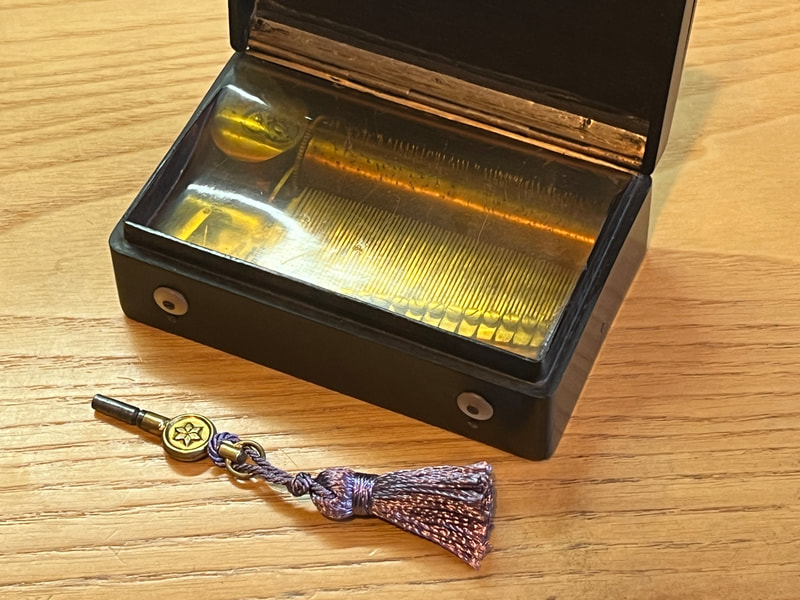2/69 Sectional Comb in Ebony case by François Alibert - Serial No 3864 - circa 1830
Bought at auction November 2023.
Lid edges were detached, but easily repaired.
Ran slowly but now sounds fabulous after a drop or two of oil on the bearings.
Lid edges were detached, but easily repaired.
Ran slowly but now sounds fabulous after a drop or two of oil on the bearings.
Tune 1 opens in a new window
Tune 2 opens in a new window
Any help identifying the tunes gratefully received.
Tune 2 opens in a new window
Any help identifying the tunes gratefully received.
This is another rare find it seems.
The maker is François Alibert. He had a workshop at rue J. J. Rousseau 10, Paris in the early 1800s making tabatières and cartels. According to Anthony Bulleid his blanks were obtained from Geneva.
The few surviving Alibert 's sometimes have his name stamped on the comb. I date it about early 1830s.
The serial number is very low, lower than Bulleid's dating Chart 8 for Francois Lecoultre whose date line starts at serial 6000 in 1830. However it is still probably a Lecoultre movement because there were two Lecoultre brothers and one Lecoultre cousin making musical boxes at about the same time. The serial number may be Alibert's or the person supplying him with the movement.
Both tunes have been heard before, so they were probably standard arrangements at the time.
They are extremely fine examples.
The maker is François Alibert. He had a workshop at rue J. J. Rousseau 10, Paris in the early 1800s making tabatières and cartels. According to Anthony Bulleid his blanks were obtained from Geneva.
The few surviving Alibert 's sometimes have his name stamped on the comb. I date it about early 1830s.
The serial number is very low, lower than Bulleid's dating Chart 8 for Francois Lecoultre whose date line starts at serial 6000 in 1830. However it is still probably a Lecoultre movement because there were two Lecoultre brothers and one Lecoultre cousin making musical boxes at about the same time. The serial number may be Alibert's or the person supplying him with the movement.
Both tunes have been heard before, so they were probably standard arrangements at the time.
They are extremely fine examples.








